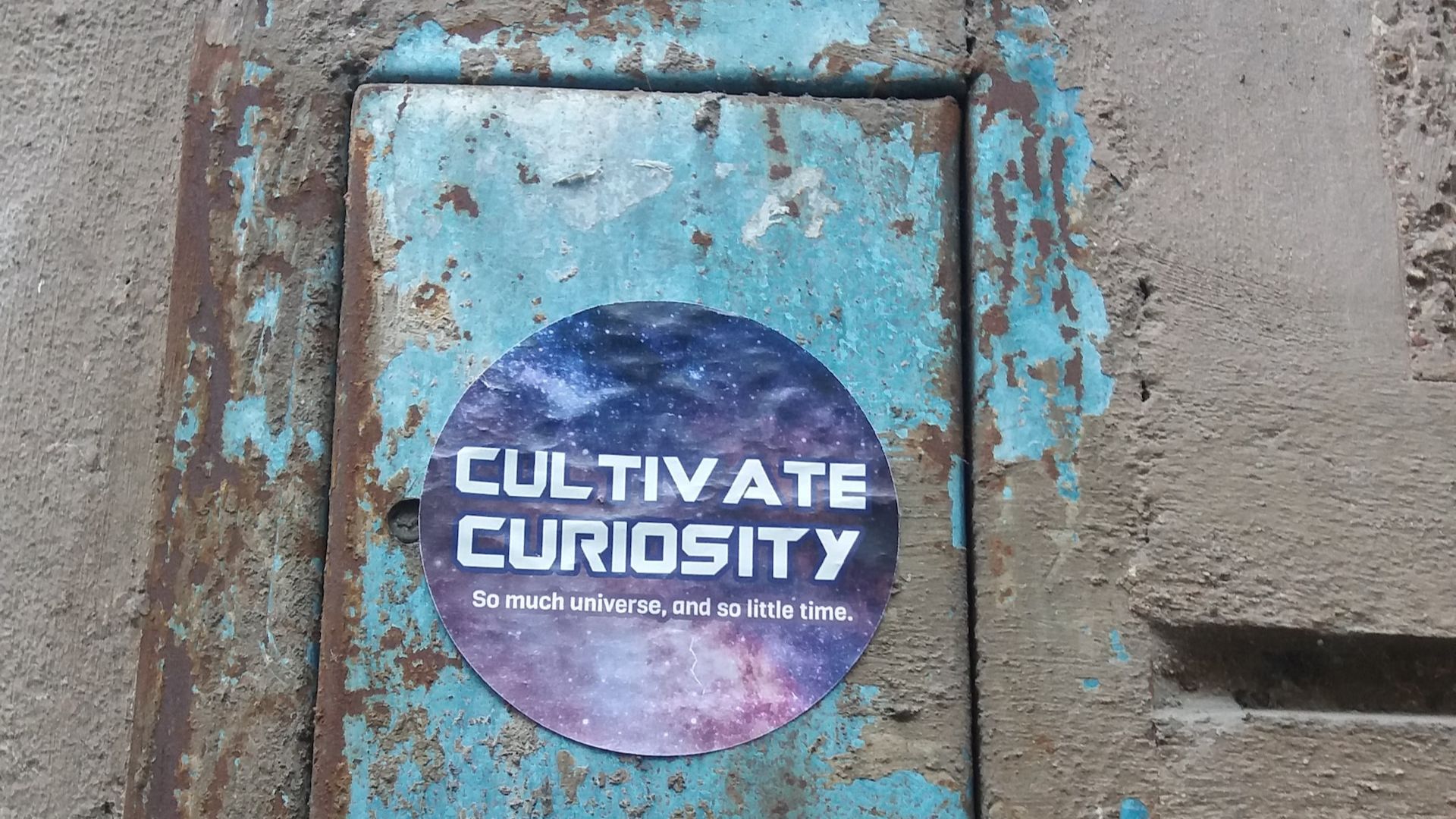How to Ask Better Questions

By: Josh
The less I talk, the better the discussion.
This is a philosophy that guides how I lead, engage with others, run meetings, and facilitate developmental sessions. There is power in questions. They create space, opportunity, engagement, and creativity. Questions can create meaningful moments.
But what does leading through questions look like? Is it that powerful? And if so, how do leaders ask better questions?
It can be detrimental if leaders are not curious and willing to ask questions. It can also be just as bad if we don’t know how to ask good questions.
So, let’s explore the power of questions and nine specific ways leaders can effectively use them to create more significant impacts.
Questions, Like Leadership, are Inherently Selfless
Questions come from curiosity. Genuine curiosity. And curiosity is selfless.
Curious leaders care about people. We seek to know about them, their lives, what moves them. We understand their needs, even their struggles and challenges. We care to make their work meaningful, their work experience enriching, and quality of life better.
Curious leaders also make people and things better. We solve problems, caring more about getting to the right answer than being the one that provides the right answer. We seek to identify areas that need attention and roll up our sleeves to tackle the issue.
Curious leaders are intentional, always seeking to make impactful moments for others.
So, before we can dive into learning how to ask better questions, we need to address an important qualifier. And that is ensuring we are driven by genuine curiosity as a leader. Intentional leaders seek to understand before trying to be understood.
Let’s first ask ourselves: Am I a curious leader?
What am I curious about?
What do I prove to not be curious about? Are there boundaries to my curiosity? If so, where and why? What does that reveal about my assumptions and confidence as a leader?
How does asking more and better questions elevate my leadership impact?
The Value of Leaders Asking Questions
Leveraging the power of questions creates value in a lot of different spaces and ways. Questions can create:
- A leader admitting “I don’t know” is not a sign of weakness or incompetence. It can actually be quite powerful, creating opportunity for others to step in and fill leadership space. Questions get others involved.
- Ownership and pride. Asking others questions gives them a chance to demonstrate their ownership and mastery in something. It enables them to take pride in what they do and show that off, stimulating their intrinsic motivation.
- By giving others space to contribute through our questions, we solicit a broader variety of perspectives and ideas. This almost always leads to better, more complete solutions.
- Space for growth and development. Questions also provide challenge, stretching others’ abilities and knowledge. Leaders can use big questions to push others outside their comfort zone. We can use questions to help others reflect. And we can use them to inspire learning.
- Questions can create clarity. It can be clarity around a problem, ultimately understanding the core issues, root causes, and forces at play. It can also create clarity around a generated solution, what the plan of action is and who is doing what. It is important for leaders to bring clarity to the team and questions are a great way to do that.
When we look at the impact questions can have, it’s easy to see all that can be lost by failing or refusing to ask questions as a leader. Let’s look at a few simple steps to ask better questions.
9 Ways to Ask Better Questions
- Ask a real question. When you pay attention to peoples’ questions, you may be alarmed at how often they aren’t actually questions. There’s advice disguised as questions, like, “have you thought about…” or “maybe you should consider…” There are also people that seem like they are at the microphone during a conference Q&A session, talking for minutes without even asking a question. Ensure we start by asking a real question, not a rhetorical one, not giving advice veiled as a question, and not simply lecturing.
- Ask one question at a time. Don’t overwhelm people with multi-part questions. Also don’t pepper them with multiple questions in a rapid-fire way. Focus on one question, engage around it, and then move on to the next one. This creates deeper, more quality discussion. This gives the other person a portion they can handle rather than overwhelming them.
- Ask a simple question. Think about being in a one-on-one meeting with your boss. They pause and ask you, “so, what feedback do you have for me?” What? How do I even start to answer that question? Compare that to a question like, “in the last month, what is something about my behavior as a boss that has made your ability to do your job harder?” It’s a more detailed question, narrower in scope, which makes it more manageable for others to respond to. This in turn creates better dialog. Ensure you craft your question to be simple, something that will generate discussion and not leave others with a deer-in-the-headlights look.
- Get to the point. Make questions simple by also eliminating the long runway of context, pontification, and justification before you actually get to the question. Not only is it distracting and complicates the question, it can be a little insulting to the other person if they feel you need to explain a lot to them.
- What > why and how. Use “what” questions, over “why” or “how.” “Why” sometimes unintentionally can make people respond in a defensive way, trying to justify themselves. “How” gets into tactical execution and how-to too quickly, often missing exploration of the subject before getting into what to do about it. Consider the difference between, “what factors drove the team to take this approach...” versus “why did you all do it this way?” Both really ask the same question, but the latter can be interpreted as judgmental rather than curious. You can craft questions to better understand intent and action using “what.”
- Silence is okay. Silence can be awkward. We often want to quickly fill it. But if we do, we don’t create space for others to fill. We also begin to violate earlier points of simple questions one at a time. We need to be okay with short moments of silence. It’s enabling, granting space for them to make sense of their ideas and generate a response. So, ask the question and shut up. Bask in the awkwardness. People will almost always fill the space.
- Actually listen to responses. Better questions are not the point. They are a tool to what is the point – better understanding, dialog, and engagements. We don’t work to craft the best question and then be done. The important part is to listen to the responses; this is what curious leaders do. Use non-verbal cues to affirm as you listen. These can be gestures like head nods, raising eyebrows to show interest, even leaning into to the person as they speak. Non-verbal cues can enhance the discussion, but ensure they are not used to fake the appearance of listening.
- Acknowledging responses. Confirm you’re listening and engaged by giving short expressions of acknowledgement. This doesn’t require extensive efforts to paraphrase or restate what the other person said. It can be as simple as comments like, “yeah, I get it” or “I hear you.” Those can go a long way to help the other person feel heard, valued, and validated, which can even further enrich the conversation. Ensure we acknowledge responses before we get into sharing our own thoughts.
- Keep the game of “catch” going. We have asked a well-crafted, intentional question. We listened to the response, affirming with non-verbal cues and acknowledged through the other person’s response. Now what? Consider viewing the continued discussion as a game of catch. You threw the ball to them with your question. They responded, maybe even asking a question back. That is them throwing the ball back at you. Now, we have reached a decision point. As a boss or the leader in the situation, it may be easy to have checked the “ask a question” box and go on to explain whatever you actually want to share, maybe lecture them. Or we can view it as an opportunity to throw the ball back with another question. Catch is a lot more interesting and fulfilling when the ball is regularly passed back-and-forth. It’s not so fun when someone monopolizes the ball.
We can use questions to produce big thinking, deep discussion, and clear understanding. We can use them in meetings, in one-on-ones, or to kick off reflective or developmental sessions. We can ask great questions while making our way through the team’s working space during some time out of the office to be present.
So, we must first be curious.
And then we ask good questions.
Then listen and engage in the conversation.
Repeat.
But questions are just the vehicle. They are not the point. Leaders should ask better questions to get to better thinking, discussion, and understanding.
How can you ask better questions today?





